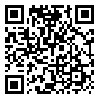Volume 3, Issue 4 (10-2013)
IJOCE 2013, 3(4): 673-693 |
Back to browse issues page
Download citation:
BibTeX | RIS | EndNote | Medlars | ProCite | Reference Manager | RefWorks
Send citation to:



BibTeX | RIS | EndNote | Medlars | ProCite | Reference Manager | RefWorks
Send citation to:
Fattahi H, Shojaee S, Ebrahimi Farsangi M A. APPLICATION OF ADAPTIVE NEURO-FUZZY INFERENCE SYSTEM FOR THE ASSESSMENT OF DAMAGED ZONE AROUND UNDERGROUND SPACES. IJOCE 2013; 3 (4) :673-693
URL: http://ijoce.iust.ac.ir/article-1-156-en.html
URL: http://ijoce.iust.ac.ir/article-1-156-en.html
Abstract: (21085 Views)
The development of an excavation damaged zone (EDZ) around an underground excavation can change the physical, mechanical and hydraulic behaviors of the rock mass near an underground space. This might result in endangering safety, achievement of costs and excavation planed. This paper presents an approach to build a prediction model for the assessment of EDZ, based upon rock mass characteristics changed. Rock engineering systems (RES) was used as an appropriate method for choosing the best parameter that expresses the occurrence of EDZ. Modulus of deformation with the highest weight in the system was selected as the most effective changed parameter. The adaptive network-based fuzzy inference system (ANFIS) with modulus of deformation as input was used to build a prediction model for the assessment of EDZ. Three ANFIS models were implemented, grid partitioning (GP), subtractive clustering method (SCM) and fuzzy c-means clustering method (FCM). A comparison was made between these three models and the results show the superiority of the ANFIS-SCM model. Furthermore, a case study in a test gallery of the Gotvand dam, Iran was carried out to illustrate the capability of the ANFIS model defined.
Type of Study: Research |
Subject:
Optimal design
Received: 2013/11/19 | Accepted: 2013/11/19 | Published: 2013/11/19
Received: 2013/11/19 | Accepted: 2013/11/19 | Published: 2013/11/19
| Rights and permissions | |
 | This work is licensed under a Creative Commons Attribution-NonCommercial 4.0 International License. |





